What Is the Function of the Ear in the Body?
The first question that comes to mind is: What is the function of the ear in the body? If we ask this question to many people, their answer might be “hearing,” and a few might say “maintaining body balance.” Both of these answers are absolutely correct, but the ear’s responsibilities go far beyond these two, and each of its functions is highly important.
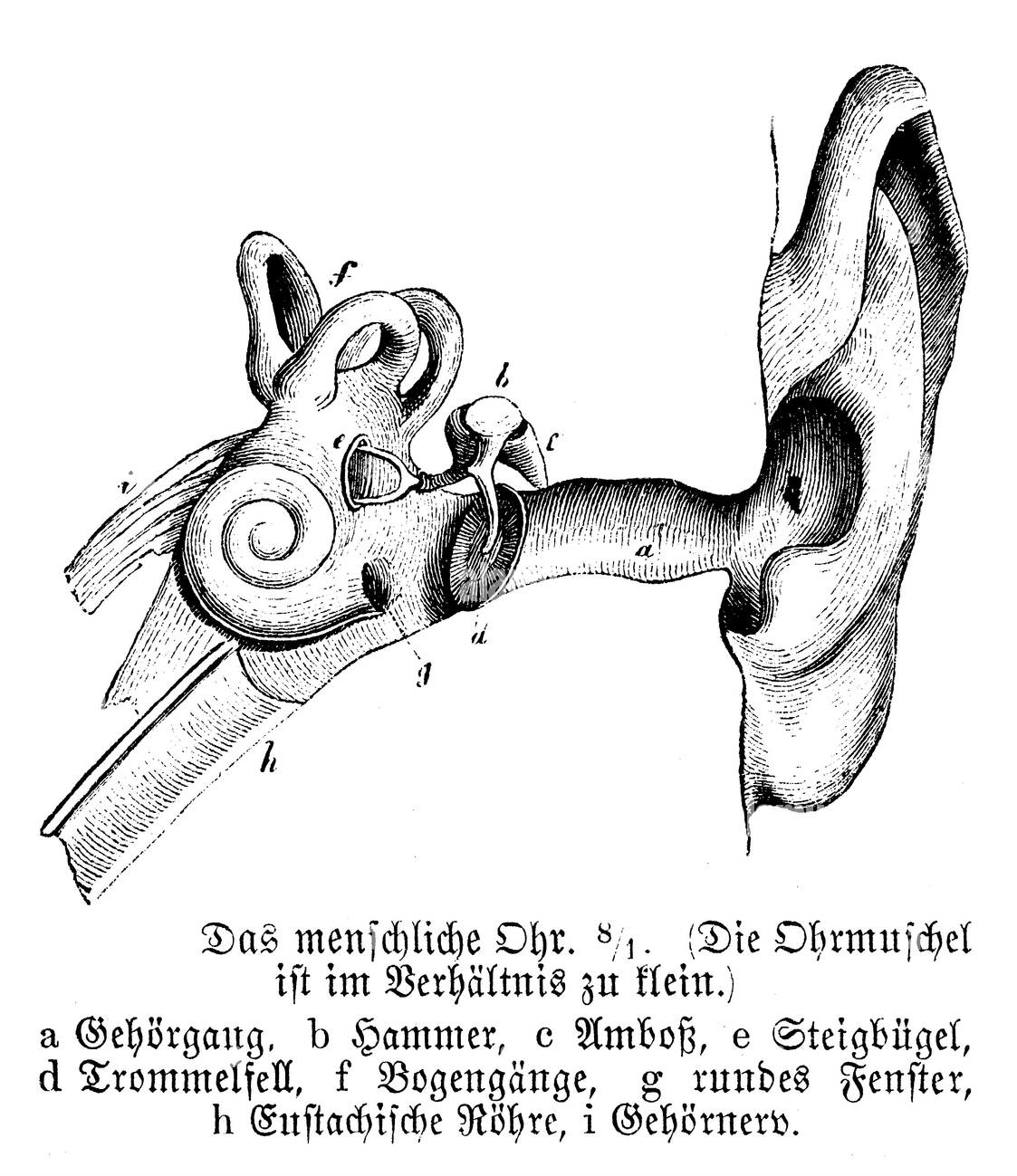
Due to its complex mechanism and structure (in my opinion, one of the five most complex structures among all body organs), the ear has a wide range of functions. Even a disruption in just one of these functions can significantly impact a person’s life. Some of these functions include:
- Perceiving the body’s position in relation to the surrounding environment
- Regulating air pressure
- Self-protection
- Strong connection with the jaw due to their close proximity
- Significant connection with the nose and throat due to their anatomical link
- And, of course, the two major functions mentioned earlier: hearing and balance.
In fact, the ear has so many functions that I might have overlooked something. (By “connection,” I mean that if the ear encounters an issue, it has the potential to affect the mentioned organs, and vice versa.)
A Quick Overview of Ear Anatomy
The anatomy of the ear is much broader and more complex than what is usually discussed, as it is an incredibly vast field. Since covering everything in detail is impossible, here is a very brief summary.
The ear consists of three main parts: the outer ear, the middle ear, and the inner ear.
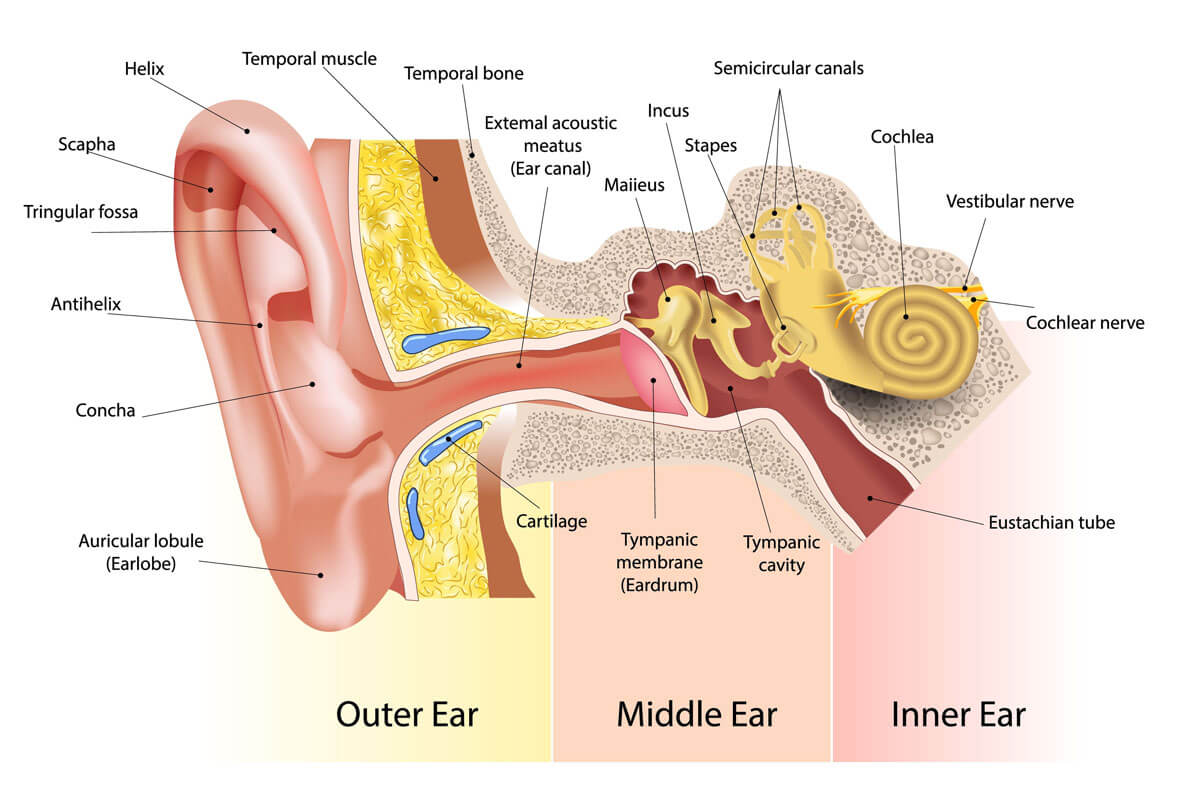
1. Outer Ear
The primary function of the outer ear is protection, as well as receiving sound signals. These signals enter through the ear canal, striking the eardrum, causing it to vibrate, and transmitting sound to the middle ear. It is also worth mentioning that the eardrum itself plays a protective role by preventing foreign objects from entering the ear.
2. Middle Ear
The middle ear receives the sound transmitted from the eardrum through a small bone called the Malleus, which is directly connected to the eardrum. This sound is then passed on to the next two small bones connected to it. (The transmission occurs through the vibrations caused by the initial impact, which in turn make all three small bones vibrate sequentially.)
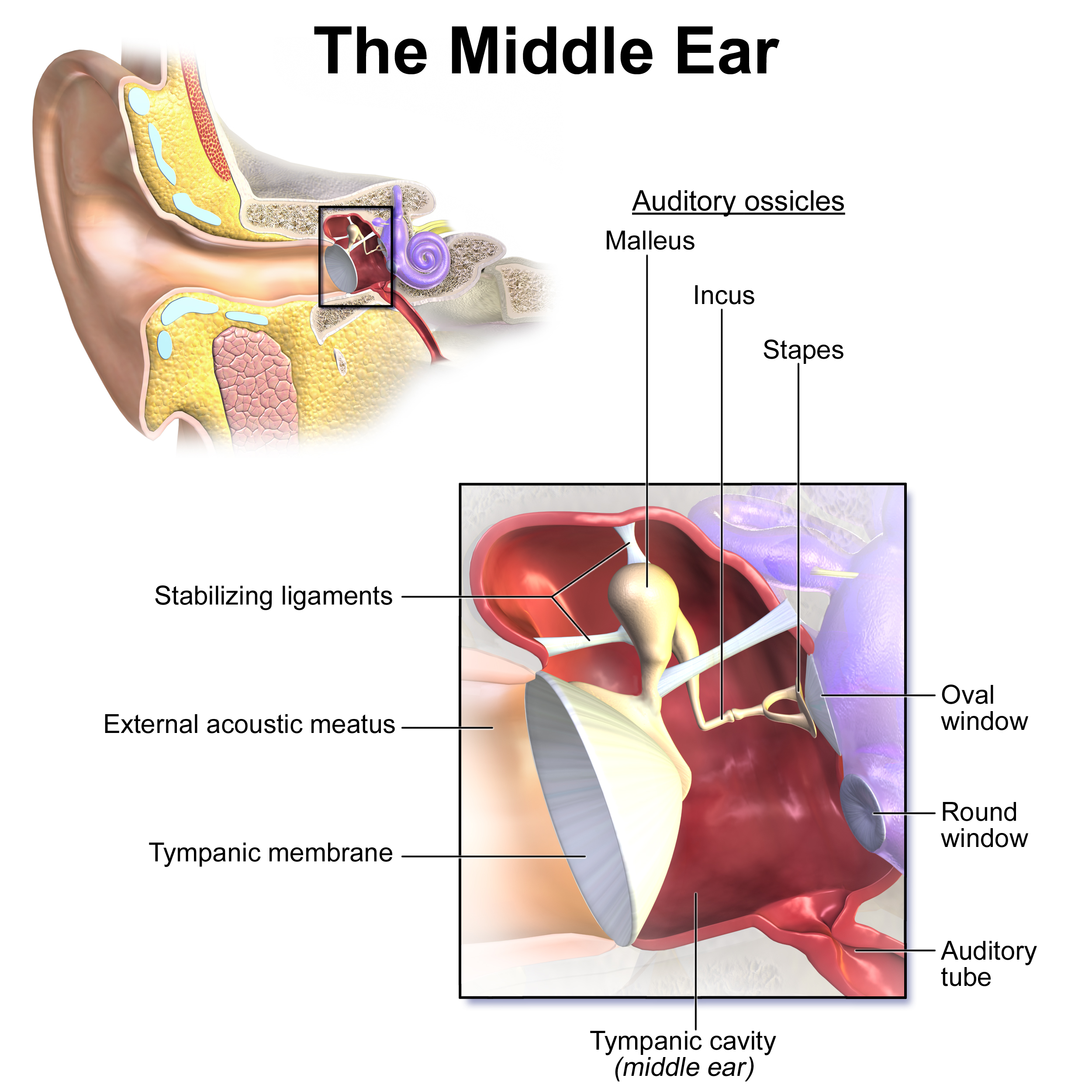
Additionally, the Eustachian tube, located in this part of the ear, connects to the nose and throat. It has several critical functions, including:
- Draining ear fluids and secretions
- Protecting the middle ear from infections
- Regulating air pressure
- Aiding in sound transmission and balance
3. Inner Ear
The vibrations reach the inner ear, where they are converted into electrical signals that are sent to the brain, allowing us to perceive sound. This process is quite complex and lengthy for distinguishing each individual letter and external sound.
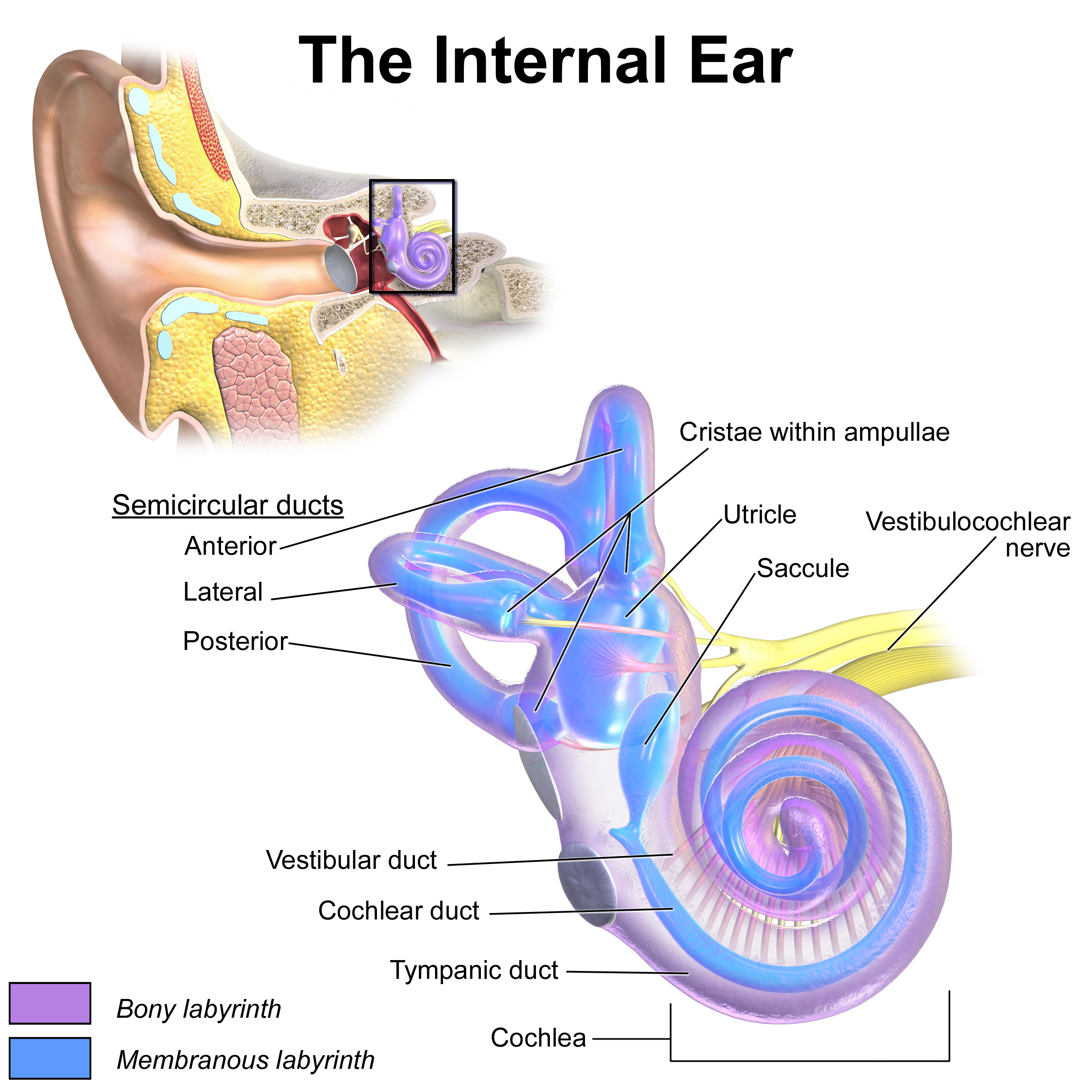
Given the length of the hearing process, an interesting question arises:
“If the process takes so long, how do we hear everything instantly?”
This question is answered in the next slide.
Another crucial function of the inner ear, particularly the cochlea, is maintaining balance in the body. The cochlea is also known as the Organ of Hearing.
How Do Humans Hear Sounds with Minimal Delay Despite the Lengthy Hearing Process?
There are many possible explanations for this question. One reason is the complexity of the human brain, which remains largely unexplored and not fully understood. However, if we consider humans as mechanical beings—which I personally believe humans are entirely physical and constructed—we can apply principles from computer architecture (specifically, multi-layered architecture) to understand this phenomenon.
By comparing the human body, its organs, and their interconnections to computer hardware components, we can think of the CPU as the brain. Just as the CPU handles processing, calculations, and distributing functions throughout a computer, the brain plays a major role in executing functions and distributing them across the entire body.
In computer design, anything that requires faster processing is physically placed closer to the CPU so that the CPU can immediately access it for calculations (e.g., cache memory or TLB).

Now, consider this:
Which is more important to process instantly—hearing, seeing, smelling, tasting, speaking, or moving a hand or foot?
Both are crucial and should happen with minimal delay, but priority matters. Which function is more essential and should be processed with the fastest response time? Logically, the sensory organs in the head have the highest priority. This is why the strongest nerves are located in the head.
For example, if you place a strand of hair under your foot, you might not feel it—even though your foot is soft. But if you place it between your teeth, you can detect it immediately, despite your teeth being the hardest part of the body.
In a way, the brain is deeply intertwined with all the organs in the head. Their close proximity allows for instant transmission of signals and functions through the nerves, ensuring that vital sensory information reaches its destination as quickly as possible.
We’ve Gained a Basic Understanding of How the Ear Works—Now, Let’s Dive into the Main Topic.
What Is Sound Sensitivity or HyperSensitivity Sound Syndrome?

Many people equate Sound Sensitivity with Hyperacusis, but it is more accurate to consider Hyperacusis as a subcategory of Sound Sensitivity.
In addition to this, we will also briefly discuss Tensor Tympani Myoclonus (TTM) since it is closely related to sound sensitivity.
Therefore, sound sensitivity issues can be categorized into three main types:
- Misophonia
- Hyperacusis
- Autophony

Misophonia
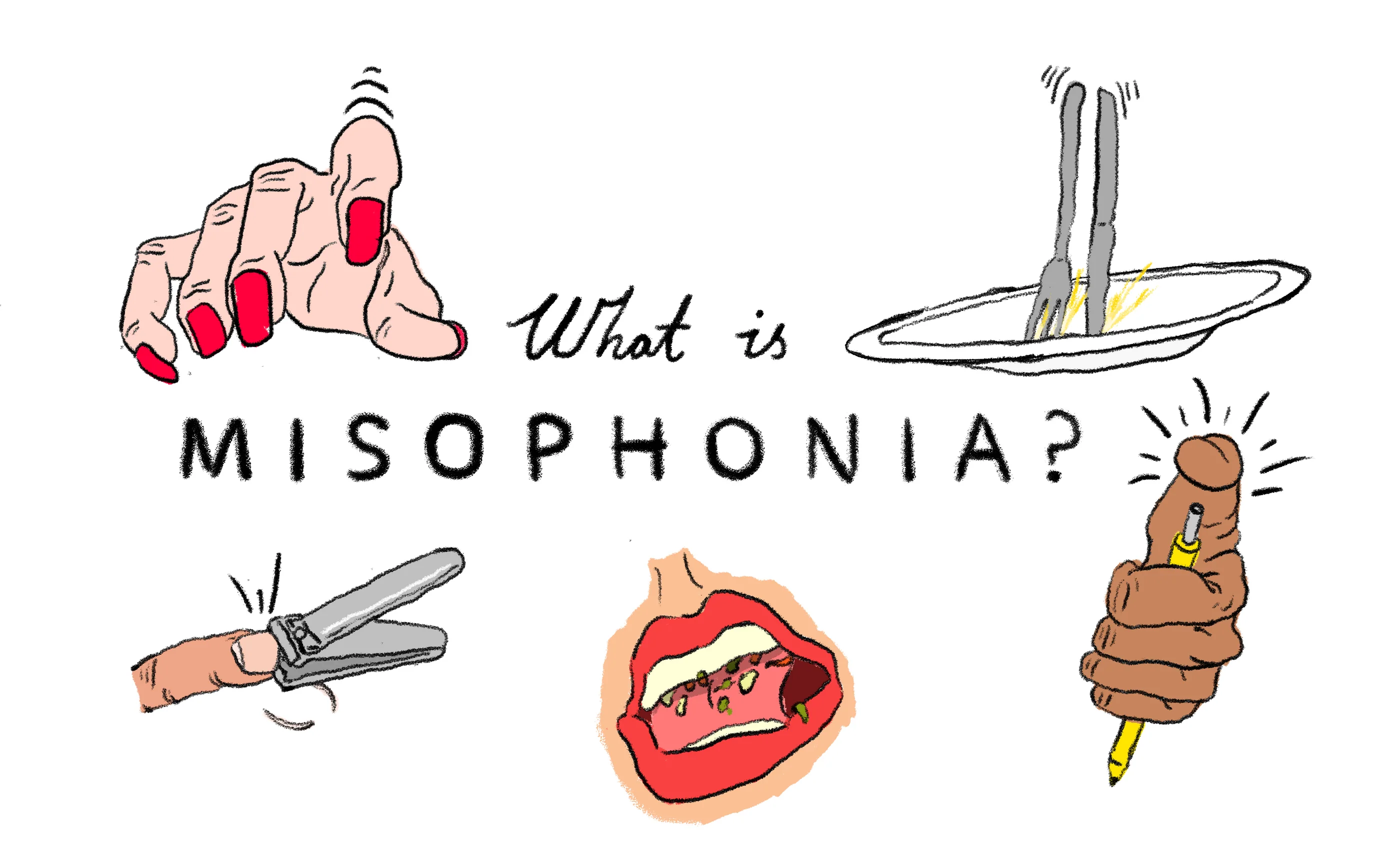
All humans feel discomfort when they scratch their nails on a wall or drag a spoon and fork across a plate. It creates an irritating and unpleasant sensation.
Now, imagine experiencing this reaction to most everyday sounds, but at a much higher intensity than normal. This can significantly disrupt daily life and impose severe anxiety and stress on the affected person.
For instance, imagine someone feeling this way every time they turn the pages of a newspaper or a book. The resulting distress can lead to extreme anxiety and stress.
This type of sound sensitivity is very rare, and treating it requires first identifying the underlying cause to determine what is triggering this dysfunction in the body.
Hyperacusis
This type of sound sensitivity occurs when environmental sounds are much louder than normal. Unfortunately, when we use the word “very,” it still fails to describe the extreme intensity of these sounds.
For example, I watched an interview with a woman recently uploaded on YouTube. She said that when working in the kitchen, she had to move in slow motion because the sound of plates clashing or any other noise was unbearable and triggered her other symptoms. Her daily life was completely disrupted, even for simple tasks like cleaning the house. She had to move in slow motion most of the time just to avoid making any noise.
She mentioned that when applying mascara, she could clearly hear the sound of the brush touching her eyelashes. She couldn’t go to stores, walk outside, or even exercise. She was even forced to stop attending church for worship.
She had to wear earplugs all day, but the sounds were still so loud for her that the earplugs barely reduced the intensity by 10 or 20 percent. Even just imagining this condition can drive someone crazy.
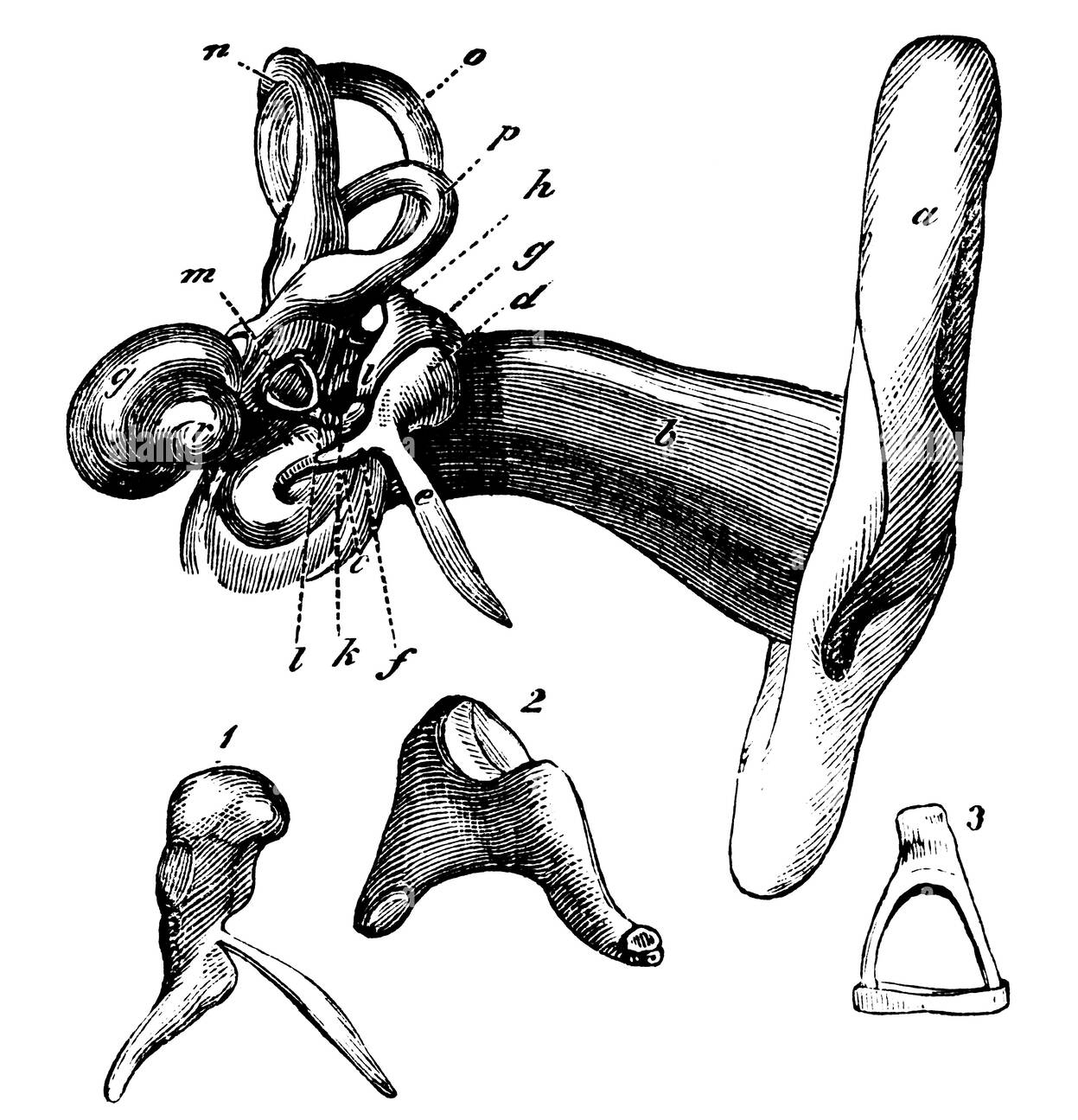
I don’t know if this is a fair comparison or not, but sometimes I ask myself, “Is it harder to be deaf or to have this condition?”
I think both are very distressing and difficult. When you’re deaf, the problem is not being able to hear, which definitely affects daily life. But when we talk about hyperacusis, the patient is also, in a way, like a deaf person—because it’s better not to hear. On top of that, hearing becomes worse than not hearing.
Just imagine how much stress, anxiety, and depression this condition imposes on a person! Where in the world can you find a place without sound? The only time you’re at ease is in absolute silence, and even then, you shouldn’t move too much.
Autophony
We talked about hyperacusis and understood how environmental and external sounds can have a destructive effect on a person’s mental health, which in turn affects the entire immune system and physical health.
Now, let’s imagine that instead of reacting to external sounds, a person becomes sensitive to the sounds inside their own body. You might ask, “How is that even possible?” Well, first of all, the human body produces many internal sounds, but thanks to the ears and the proper functioning of the Eustachian tube, we don’t usually hear them.
Now, another question: “Why does it matter whether a person hears their own internal sounds or not?” The importance of this becomes clear when you realize how loud the body’s internal sounds actually are. When someone develops autophony, they can hear all the sounds inside their body. The loudness of these sounds depends on how severe the condition is.
“What kinds of internal sounds can become distressing?” The answer is many. For example, consider speaking—when we talk, the sound produced inside the body before it exits is much louder than what we hear externally. Another example is the sound of the heartbeat.
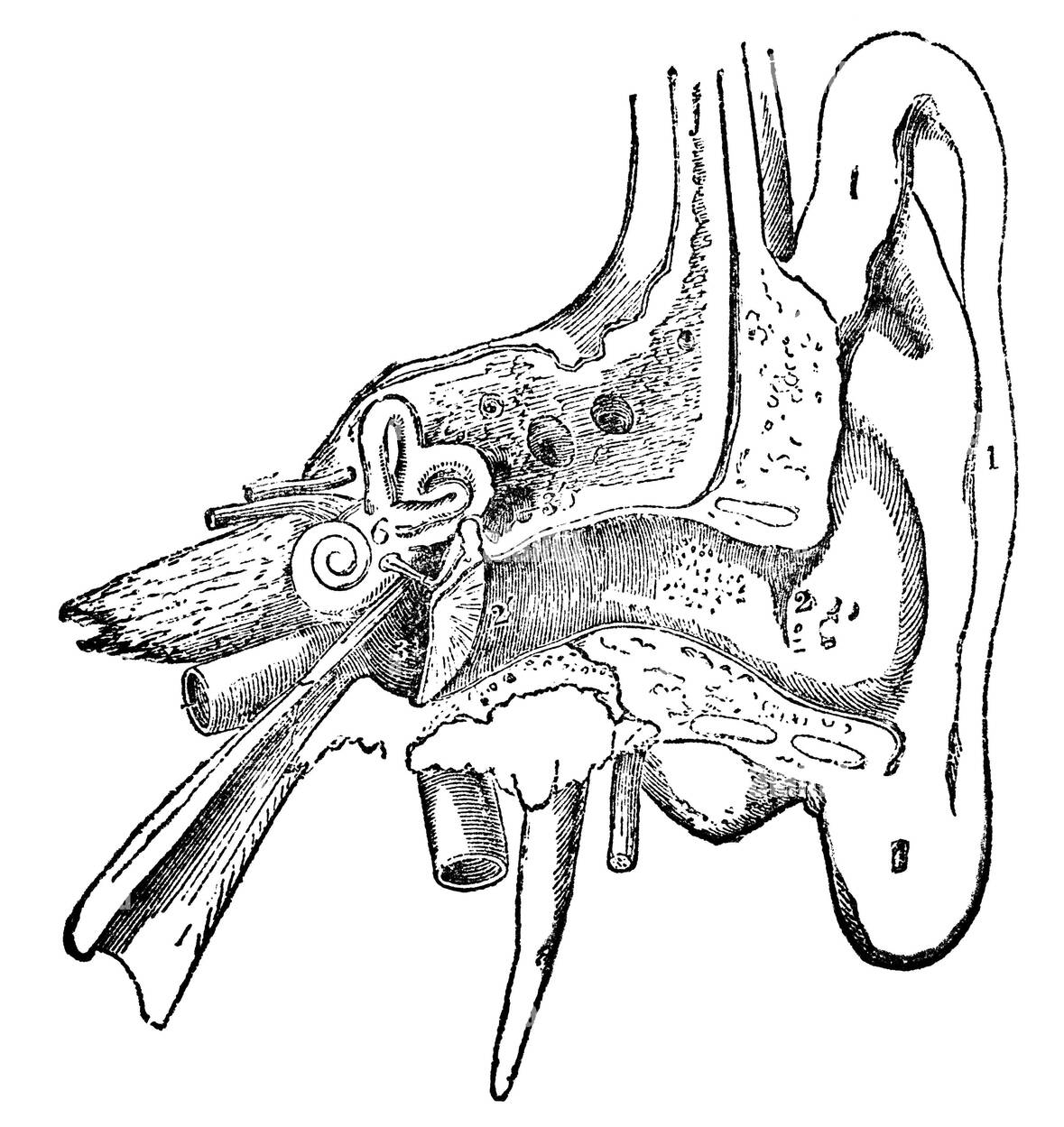
Some people might say, “Oh, I’ve heard my heartbeat before,” but unfortunately, it’s not what they think. Just as hyperacusis makes external sounds much louder and unbearable, autophony makes internal sounds extremely loud and distressing.
The main issue is that earplugs won’t help, because the problem isn’t external sounds—it’s the sounds coming from inside the body. These internal sounds hit the eardrum from the inside, going through the normal hearing process again, but this time, they are excessively loud and echo throughout the entire head.
What causes autophony?
One of the factors that can cause this type of sound sensitivity is an infection or inflammation in the Eustachian tube, which leads to a condition called “Patulous Eustachian Tube Dysfunction.” This typically heals within two weeks to one month, returning to normal. However, if a person suffers from this condition for a longer period of time, the problem is likely to be structural.
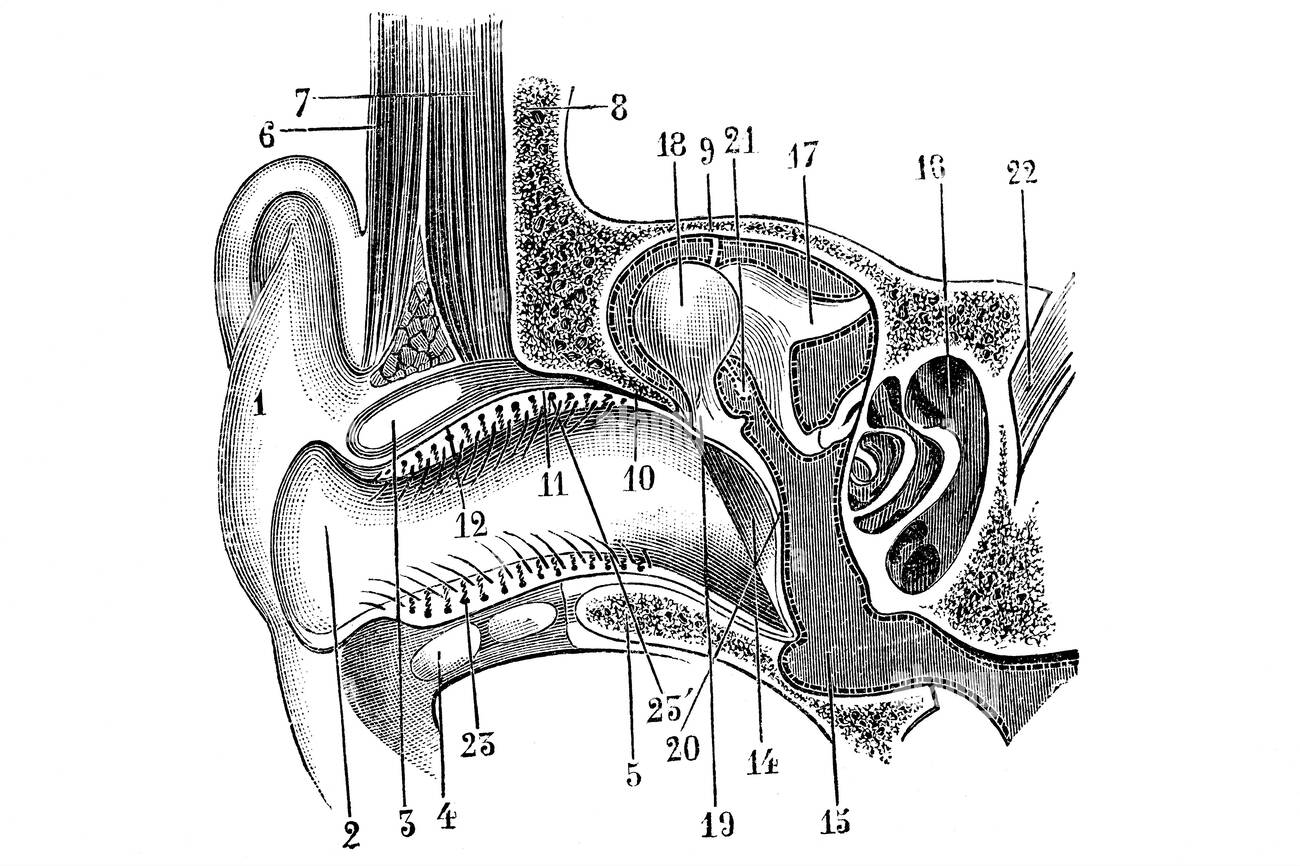
What does “structural issue” mean? First, it’s important to have a general understanding of the Eustachian tube. The Eustachian tube is a small and narrow tube that connects the ear to the nose and throat, helping regulate air pressure and drain fluid and secretions from the ear. The Eustachian tube is controlled by muscles, meaning that certain muscles open or close it.
When should the Eustachian tube open? For instance, it opens when swallowing or yawning to equalize air pressure, and it stays open for a very short time. Another example is when environmental pressure changes, such as when you go mountaineering or fly in an airplane.
As explained earlier, the Eustachian tube is controlled by muscles. Two of these muscles are the Tensor Tympani and Stapedius. When a person has a structural issue in certain parts of the body, such as the jaw or neck, these muscles may not function properly. As a result, they face difficulties in performing their tasks as directed by the brain, leading to Eustachian tube dysfunction. As a result, the Eustachian tube stays open, and any internal body sounds directly enter the middle ear, causing them to be heard.
In my opinion, I am the best test case for this condition. One day, I woke up randomly and noticed this issue. It was the strangest feeling I have ever experienced. For me, it started with hearing my own voice or the echo of it throughout my head. Over time, month by month, it became chronic and intensified. Now, I can easily hear all the sounds of my body. The sound of my heart pumping, the sound of my jaw (not related to TMJ), or when I swallow saliva, I can fully feel what’s happening in my throat. I can also hear the sound of blood flowing in my veins.
Sometimes, these sounds get so loud that when it’s night and everything is quiet, they overpower everything else and wake me up. In contrast to people who suffer from hyperacusis, I sometimes go to crowded places to reduce the sound of my own body. Sometimes speaking is very difficult because when I talk, my own voice is too loud for me, and it makes conversations difficult.
Important note: There is a reverse condition to Patulous Eustachian Tube Dysfunction, called Obstructive Eustachian Tube Dysfunction, which we are not discussing here. Obstructive Eustachian Tube Dysfunction can also be caused by inflammation, infection, or structural issues.
Tensor Tympani Myoclonus (TTM)
What does Tensor Tympani Myoclonus mean?
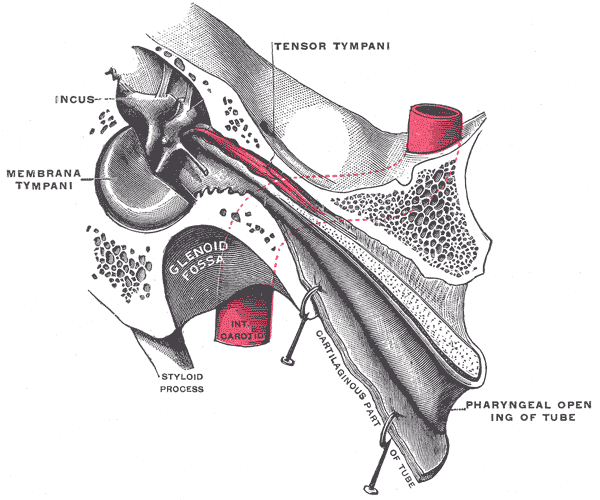
As I mentioned before, the Tensor Tympani muscle is one of the muscles that controls the Eustachian tube. It is controlled by the Mandibular Branch of the Trigeminal Nerve, and if this nerve is affected, it can result in involuntary and repeated spasms of the Tensor Tympani muscle.
As a result, it feels like someone is constantly playing a drum right inside your ear. The longest and most persistent period I experienced this issue lasted almost a month, and it was, by far, the worst experience of my life. The sound was similar to the sound of a timpani drum.
Comparison of the Anatomy of the Human Ear and Various Musical Instruments
What I’ve learned along this journey is that the ear and its components can be thought of as a classical music orchestra (I’m not sure if this is exactly correct, but I mean the large orchestras conducted by a music director). And I think some of the different instruments in the ear were inspired by and based on various musical instruments.

The reason I can offer for this is that the sound of the repeated, involuntary spasms of the Tensor Tympani muscle is exactly like the sound of a Timpani drum. For example, the eardrum could be considered a drum, or the ossicles of the ear could be considered the electric guitar and bass. The Eustachian tube could be imagined as an equalizer and sound controller, and so on…
Last Question: Is Every Type of Sound Sensitivity Treatable?
As mentioned before, the goal of this discussion is not to provide a treatment process, as it is very complex and lengthy. Each person is unique, so the type of treatment must be unique as well. However, if you find people online who are dealing with these types of conditions, many will say that it is not treatable. About 90% of them agree with this opinion. Unfortunately, they haven’t been able to find a cure, even after visiting many doctors. In many cases, it is not even diagnosable through imaging, as the problem involves areas that cannot be seen or require specific imaging tools.
My personal opinion on the treatment of sound sensitivity?
I completely disagree with the idea that this condition is untreatable. I believe it is definitely treatable, but it is very difficult to treat (in terms of treatment time and identifying the root cause). Perhaps it’s better to look for the problem outside of the ear, because the body is interconnected like a chain. If one part of the chain is broken, it can affect the rest of the chain. I believe the main reason people think it’s untreatable is because they only search for the problem within the ear.
Final Words
Any form of sound sensitivity can disrupt a person’s life, and it has the potential to destroy every aspect of their daily routine, leading to anxiety, stress, and depression. An important point in some conditions is that the person may appear perfectly healthy from the outside, but the reality inside is completely different, and sound sensitivity is no exception to this rule.
I, too, in this difficult journey, strive to never give up and continue fighting for a cure, even though I don’t know what the outcome will be or how long it will take if I do recover. Because, in my opinion, not giving up is the only option I see to overcome this disease and the 10 to 15 other symptoms I have.
